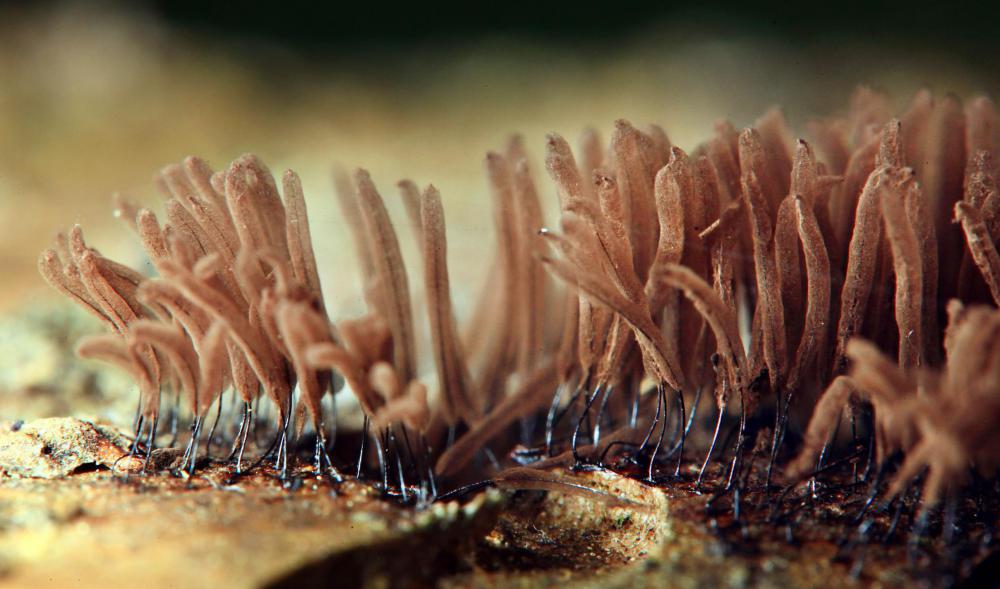At HomeQuestionsAnswered, we're committed to delivering accurate, trustworthy information. Our expert-authored content is rigorously fact-checked and sourced from credible authorities. Discover how we uphold the highest standards in providing you with reliable knowledge.
What is the Relationship Between Mold and Fungus?
The relationship between mold and fungus is that mold is actually a type of fungus. In taxonomy, a scientific way of classifying and ranking life, fungus is one of the three kingdoms, along with the plant and animal kingdoms. Mold and fungus both have common and scientific connotations, though "fungus" is a more scientific and precise term than mold.
Mold is the common name for a set of organisms belonging to different phyla, another taxonomic division, within the fungus kingdom. Fungi are eukaryotes, characterized by nucleated cells and membrane bound cell structures, as opposed to prokaryotes, which don’t have nuclei or membrane-bound cell structures. They are also heterotrophic, meaning they can’t make their own energy, like plants, and must live off of the organic matter in their habitat. Phyla of fungi include the Chytridiomycota, Ascomycota, Blastocladiomycota, Microsporidia, Glomeromycota, Neocallimastigomycota, and Basidiomycota.

It is difficult to make a precise a differentiation between mold and fungus of other sorts, as mold belongs to several different phyla and shares these phyla with other types of fungi. It does not fit neatly within any categorization. Generally speaking, mold is a type of mycelium that produces mostly asexual spores called conidia, but sometimes includes sexual spores as well. This contrasts with mushrooms, a sexual fruiting body of mycelium. Mycelium is a type of fungus that grows in the form of multicellular, branching threads called hyphae. This is unlike yeasts, which grow in a unicellular fashion.

Mold is not visible to the naked eye until it forms a colony, like one might see growing on the wall or on bread. Often, mold is brightly colored, often helping to differentiate mold and fungus of other kinds. Mold typically belongs to the asexual members of the Basidiomycota and Ascomycota phyla.
Mold and other fungi can cause negative health impacts, including allergic reactions, infections, and exposure to mycotoxins. Mycotoxins are chemicals produced by certain types of molds aimed at preventing competing microorganisms from growing. These chemicals can impair the immune system and lungs, and make the body more susceptible to bacterial infection. Stachybotry's chartarum, often called black mold, is a fairly common example of these toxic molds and is most likely to cause health problems in a damp enclosed spaces, like flooded homes.

Humans have also used other sorts of mold, yeasts, and mushrooms to their benefit, in leavening bread, edible mushrooms, producing alcohol, making drugs, and culturing cheeses. The mold Penicillium is perhaps the most famous of these “good” fungi. Penicillium has been used in the production of cheeses for many years and, in 1928, it was discovered that the bacterium could also be used to make antibiotics. Alexander Fleming, a Scottish scientist at St. Mary’s Hospital in London, accidentally left a petri dish containing Staphylococcus bacteria open, allowing it to become contaminated with a mold later identified as Penicillium notatum. Fleming observed that the mold was combating the bacteria, leading to the development of the highly prescribed antibiotic, penicillin.
AS FEATURED ON:
AS FEATURED ON:














Discuss this Article
Post your comments